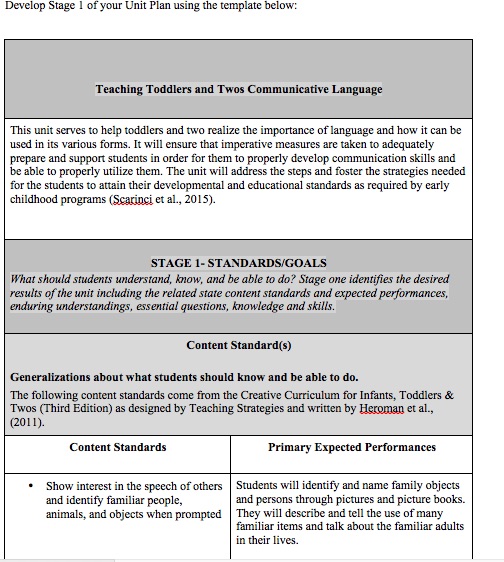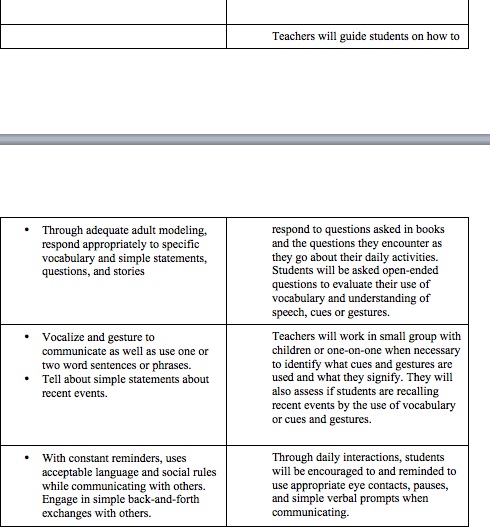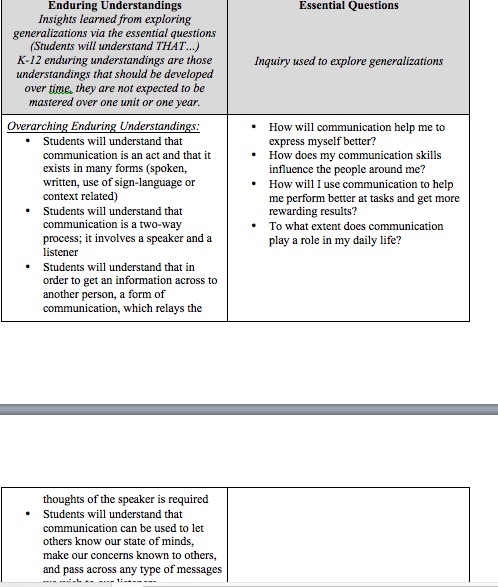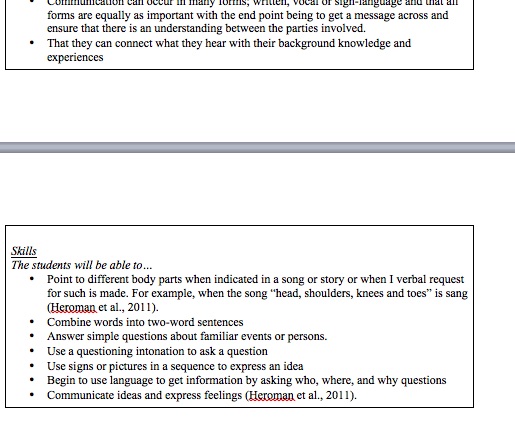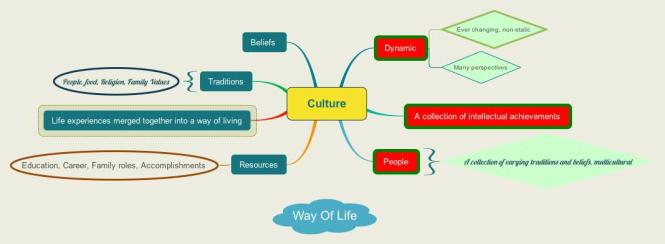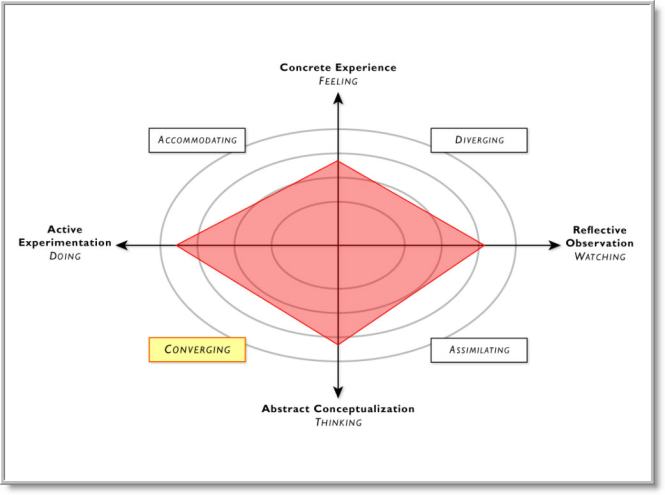Part One: GRASPS elements for Authentic Task
Unit- Developing Language/Communication skills
Grade- Toddlers & Twos
Performance Task- Demonstrating the use of language/communication skills in performing daily routines
Goal: To create a flexible and age appropriate curriculum that will teach learners the effective communication skills using verbal and non-verbal cues. The verbal cues will include written or spoken language while the non-verbal cues will include sign language or context-related cues.
Role: The teacher will oversee this process and will serve as a role model on how communication skills should be used.
Audience: Toddlers and twos ages 18 to 36 months
Situation: Explore various ways in which language/communication can be used to get information across to a target audience
Product/Performance/Purpose: Students will have opportunities to engage in learning experiences of their choice that will require them to explore various ways that they can use communication skills. Some of these experiences will include:
Using props to retell stories
Organizing their own puppet show
Cooperatively set up and participate in pretend play
Participating in read-alouds and answering open-ended questions afterwards
The purpose of this task is to show students that language/communication exists in practically all of our daily activities and that there are acceptable ways that these skills should be used.
Standards -The following standards are from Connecticut’s Early Learning and Developmental Standards (CTELDS, 2014):
Strand A: Word Comprehension- L.24.1. Demonstrate in a variety of ways understanding of most of what is communicated through gestures, signs or oral language
Strand A: Word Comprehension- L. 36.1. Demonstrate an understanding of an increased vocabulary, influenced by experiences and relationships
Strand B: Expression of ideas, feelings and needs- L.24.6. Use words to request objects, have needs met or gain attention
Strand B: Expression of ideas, feelings and needs- L. 36.7. Comment on a variety of experiences, interactions or observations
Strand C: Conventions of conversation- L.24.8. Take turns in conversations by initiating and sustaining a simple conversation over two turns
Strand C: Conventions of conversation- L. 36.10. Have conversations with adults and peers that include four or more exchanges
Strand D: Understanding of stories or information- L.24.13. Answer simple specific questions about familiar stories (e.g., “what does the cat say?”). Ask basic questions about pictures (e.g., “who is that?)
Strand D: Understanding of stories or information- L.36.14. Enjoy telling and retelling stories and information
Part Two: Rubric for Authentic Assessment
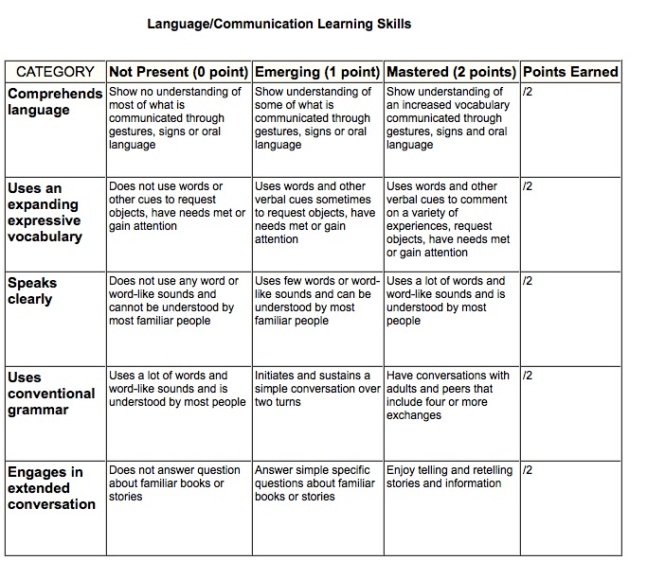
Total—————–/10
Reflection
In creating this authentic performance task for my students, I had to rethink my strategies and ensure that my curriculum allows for flexibility, open-mindedness and offer my students the opportunity to be higher-order thinkers (Wiggins & McTighe, 2005). This approach is important because it allows my toddlers and twos to be actively involved in their learning of language/communication skills. Engaging in the enlisted tasks will be meaningful to my students because it will enable them to demonstrate an understanding of this unit’s purpose through their cooperation with peers in task performance. Young children tend to be very motivated when they can contribute to their learning process so, making them orchestrators of this entire process will be a good way to keep them engaged and encourage active participation.
Also, creating an authentic performance rubric will afford me the opportunity to effectively and adequately measure my students’ understanding of the unit’s goal, evaluate their knowledge as well as they skills they have developed in this process. This will be meaningful to them because it they will receive productive feedbacks that will help them make connections on how their learning and acquisition of language/communication skills relates to the real world and how relevant this skills is for their development and advancement in life (Frey et al., 2012).
Question: Is it absolutely necessarily to assess/evaluate children in early children programs based on a set rubric, given that children grow and develop at varying levels? If yes, should these assessments follow a strict order or to what point should flexibility be allowed?
References
Connecticut’s Early Learning and Developmental Standards (2014). What children, birth to five, should know and be able to do. Hartford, CT: Connecticut State Department of Education.
Frey, B. B., Schmitt, V. L., & Allen. J. P. (2012). Defining authentic classroom assessment. Practical Assessment, Research & Evaluation, 17(2), 1-18.
Wiggins, G. P., & McTighe, J. (2005). The design process. In Understanding by design (pp. 105-125). Alexandria, VA: Assoc. for Supervision and Curriculum Development.






